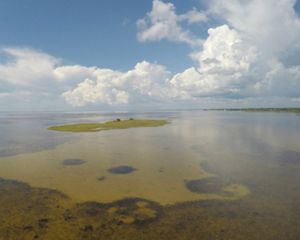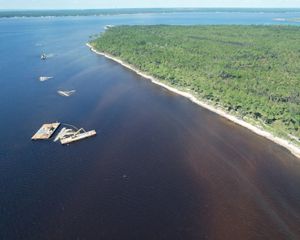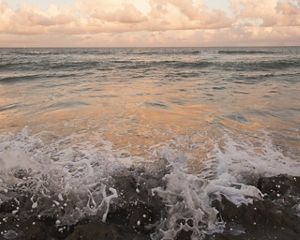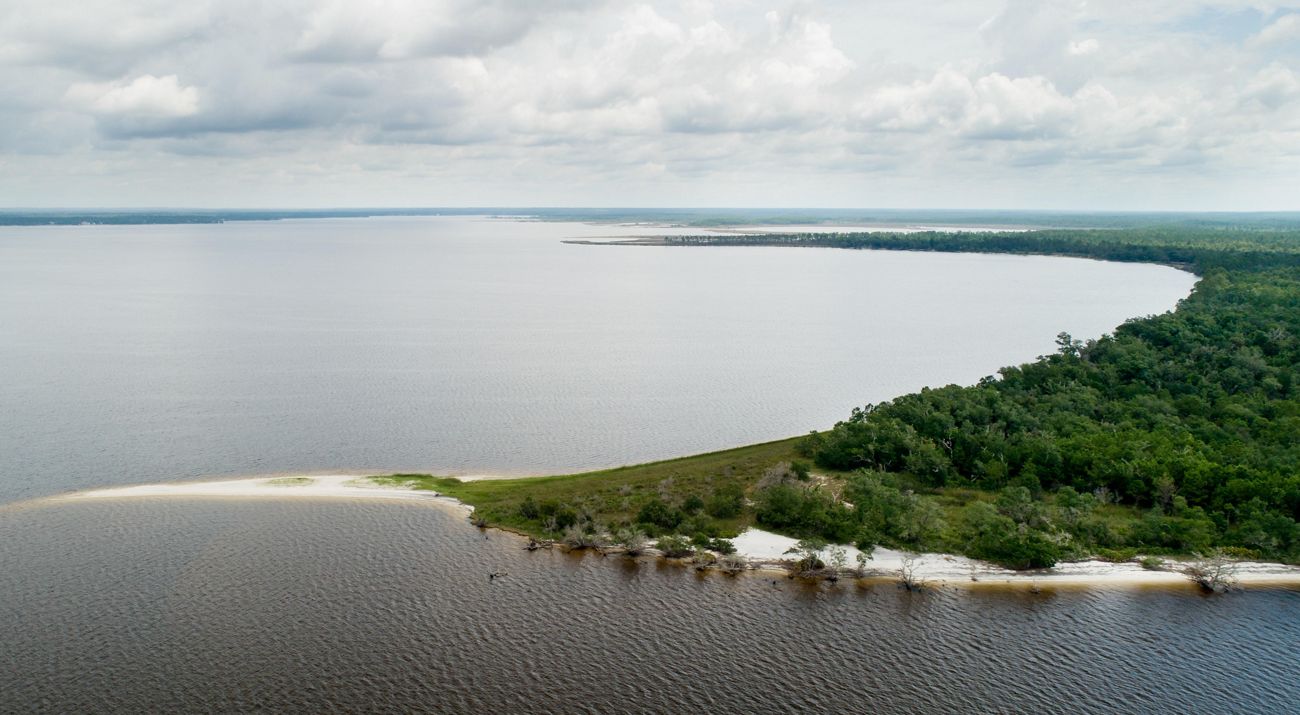
Swimming in crystal clear water, eating delicious seafood, fishing, boating, strolling the beach or simply sitting and looking out at the view: these are activities that residents in the Pensacola East Bay region of Florida cherish. More than 5 million people live along Florida’s Gulf coast and care deeply about keeping this backyard treasure healthy for their children. So does The Nature Conservancy.
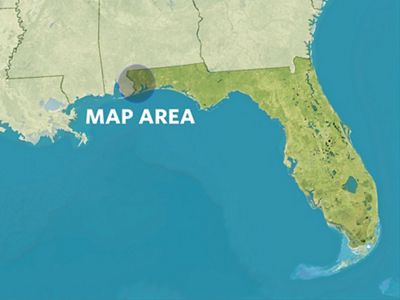
Rich natural longleaf pine forests and wetland areas are important sources of clean fresh water and air. The Gulf coast’s estuaries harbor oyster reefs, seagrass beds and marshes that provide critical habitat for marine life and sustain some of the state’s most important fisheries. Resilient coastal communities are directly tied to a healthy environment. Returning these areas to their natural conditions will benefit us all.
The work of TNC and our partners makes a strong case for the value and viability of conserving and protecting the Pensacola and Perdido watershed through a variety of projects. We have the opportunity of a lifetime to work together and create a legacy of prosperity for our children, grandchildren, residents and visitors. We can work together now to secure our future tomorrow. Conserving our natural resources through targeted conservation, management and restoration will accomplish these results.
Explore the Region
TNC leads and supports a number of important conservation and restoration projects in the Greater Pensacola area of the Florida Panhandle. These range from oyster habitat restoration and fisheries management to large scale estuary programs. Click through this map to learn more about TNC’s and our partner’s work in the region.
Pensacola and Perdido Bays Estuary Program
As a non-regulatory program, the Estuary Program is identifying science-based goals and objectives for restoring and conserving the watersheds’ environment and economy through collaboration among government agencies and the public.
Pensacola East Bay Oyster Habitat Restoration
Santa Rosa County Oyster Habitat Restoration
Perdido Blueway Trail and Watershed Protection
Crossing two states, Alabama and Florida, this project is designed to develop a bluewater trail on the Perdido River and Bay, acquire land to protect water quality and provide habitat for wildlife, and educate the public about the value of watersheds.
Rattlesnake Bluff Road and Riverbank Restoration
Restoration and improvement of Rattlesnake Bluff Road, a lengthy unpaved road, will reduce sedimentation entering the Yellow River. The river drains into Blackwater Bay, which is part of our Pensacola East Bay Oyster Habitat Restoration project site. Sediment substantially degrades habitats for state and federally protected species in the area such as the Gulf sturgeon.
Oyster Fisheries and Habitat Management Plan
This plan will integrate needs of oyster fisheries with the need to deliver ecosystem services and benefits provided by natural oyster habitat. The plan can serve as a framework for transformation of the state’s management of oysters in Florida.
Learn More about our Work in the Pensacola and Perdido Bay Watershed

Oyster Management and Restoration
Oyster reefs are important to our estuaries and our health. They provide important ecosystem services – filter and clean the water, provide nursery habitat for fish, shrimp, crabs and birds, and help to reduce shoreline erosion. For such a small animal with no backbone, oysters provide powerful services!
Pensacola East Bay Oyster Habitat Restoration
Led by The Nature Conservancy
The Pensacola East Bay Oyster Habitat Restoration Project, funded by the National Fish and Wildlife Foundation’s Gulf Environmental Benefit Fund, is the largest scale estuarine habitat restoration TNC Florida has undertaken. The objective is to restore oyster habitat that has been lost in the East and Blackwater Bays in Santa Rosa County. The work complements restoration completed by the state on harvested reefs adjacent to the project site and will serve as a model for large-scale oyster habitat restoration.
Phase 1, which was completed in March 2019, consisted of two years of pre-restoration monitoring, permitting, and design of 33 individual oyster reefs of varying sizes to be located along approximately 6.5 miles of shoreline in East and Blackwater Bays in Santa Rosa County. We worked in partnership with stakeholders from local, state and federal agencies to share technical information and expertise on the project design.
Phase 2 is just getting underway and includes construction of the 33 reefs that were designed during Phase 1, followed by five years of monitoring to evaluate progress and success in the newly created habitat, and measure how many oysters are thriving.
Santa Rosa County Oyster Habitat Restoration Project
Led by The Nature Conservancy and Santa Rosa County
Knowing where oyster habitat exists today, how much is there and how healthy it is, are key pieces of information needed to fully restore a bay’s oyster population. Yet this information hasn't been collected from many estuaries. Part of a long-term goal to conserve, restore and manage oyster habitat in the greater Pensacola Bay system includes filling this gap in East and Blackwater Bays in Santa Rosa County. The oyster mapping and condition analysis that results from this project, along with creation of a county-wide oyster shell recycling program, will support future oyster restoration projects in the area. County and TNC staff plan to engage with the community through outreach and communications about the ecological, economic and social benefits of the Gulf's oyster and estuarine habitats and species. Funding for this project is provided by Santa Rosa County and the RESTORE Act.
Oyster Fisheries and Habitat Management Plan
Led by the Nature Conservancy
Oysters are unique among Florida’s fisheries and coastal habitats. They are a species that is an important fishery and they create reefs that are some of the most important ‘fish making’ habitats in the world, supporting other commercially and recreationally important fishes. Oyster habitat is in serious decline throughout the world, including in Florida, and the once highly productive oyster fisheries are collapsing. The good news is that recovery is possible with proactive restoration and sustainable management. Through a facilitated, consensus-based stakeholder process, an Oyster Fisheries and Habitat Management Plan has been developed for the Pensacola Bay System that integrates the needs of the oyster fisheries (both wild harvest and aquaculture) with the need to deliver ecosystem services and benefits provided by oyster habitat. The plan can serve as a model framework for transformation of the state’s management of oysters in Florida.
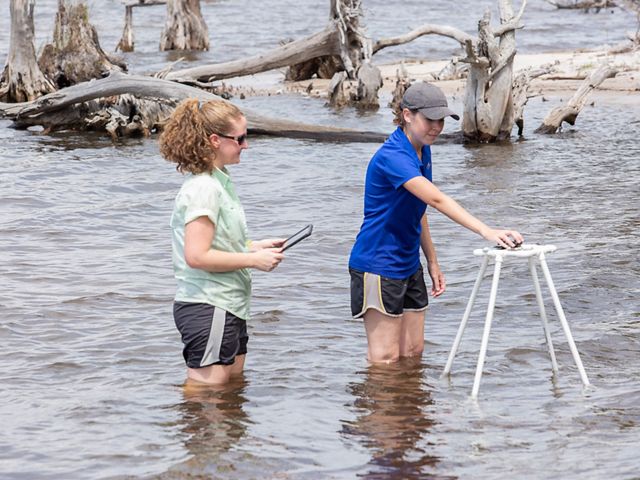
Pensacola and Perdido Bays Estuary Program
Led by Pensacola/Perdido Bay Area Local Governments
Communities throughout the Pensacola and Perdido estuaries united to form the first Estuary Program in Florida’s Panhandle region, funded by the Environmental Protection Agency and Deepwater Horizon oil spill settlement funds. This non-regulatory program will leverage and coordinate efforts among all stakeholders including local, state and federal government and the public, to identify science-based goals and objectives for restoring and conserving the watersheds’ environment and economy. The establishment of this program is the result of years of collaborative effort by local governments, non-government organizations, and public requests for the creation of an estuary program in Northwest Florida.
TNC played a pivotal role in conceiving the new estuary programs in the Panhandle, initiated by the Community-based Watershed Planning we organized and facilitated for every watershed in the Panhandle and the Springs Coast. TNC will continue to be an integral partner with the Estuary Program during the planning process.
The Estuary Program will guide the development of a science-based Comprehensive Conservation and Management Plan (CCMP) that will be a fully vetted roadmap for achieving publicly identified environmental and economic outcomes and goals for the Pensacola and Perdido Bay watershed.
National Estuaries of Significance Designation
In 2024, the Pensacola and Perdido Bays Estuary of National Significance Act passed, paving the way for continued restoration efforts.
"For more than five years, The Nature Conservancy in Florida has partnered with Escambia County and the Pensacola and Perdido Estuary Program to aid in conservation of this vital watershed," said Executive Director Greg Knecht in a statement. "The Pensacola Perdido watershed is one of TNC in Florida’s highest priorities and the passage S.50 will supercharge the effort to designate the region as a National Estuary Program."
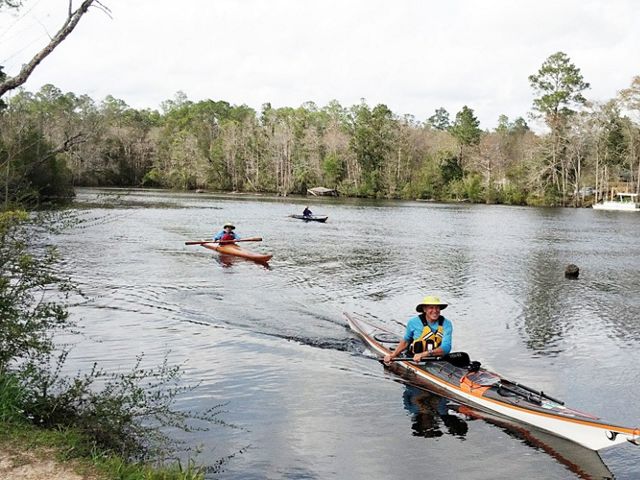
Perdido River
Perdido Blueway Trail and Watershed Protection
Led by The Nature Conservancy
Rivers are the lifeblood of the Gulf and to restore it, the rivers and the watersheds that drain to them must be restored. The goal of this project is to create a bluewater trail on the Perdido River and Bay so that paddlers can experience the watershed and its diverse habitats and see for themselves how the lands and waters along the river are connected. This is a joint effort by TNC in Alabama and Florida.
In addition to the bluewater trail, land acquisition is a critical part of this project. The goal is to acquire and protect key parcels of land, floodplains and buffer areas to preserve important habitats, species, and the river’s water quality as development occurs in the Perdido watershed.
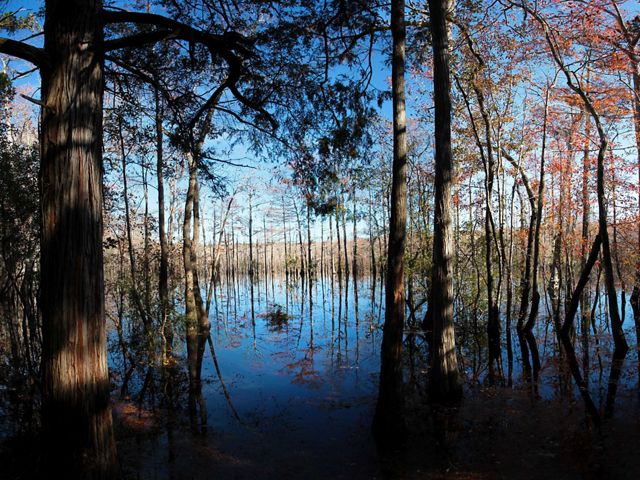
Sediment Reduction
Rattlesnake Bluff Road and Riverbank Restoration
Led by the U.S. Department of the Interior
Throughout Florida’s panhandle, heavy rainfall causes unpaved roads to become impassable and delivers sediments from the roads into our estuaries, reducing water quality. TNC and key partners conducted studies that identified Rattlesnake Bluff Road, an unpaved road in Santa Rosa County that commonly washes out and runs parallel to the Yellow River, as a high priority for improvement and restoration. This restoration is critical to protecting the River corridor that provides important habitat for state and federally protected species and drains into Blackwater Bay, a part of our Pensacola East Bay Oyster Habitat Restoration.
The project proposes to restore approximately 15 miles of road and 25 miles of river and tributary habitats, improving the river's environment and water quality and providing a stable and reliable road for residents and visitors.

